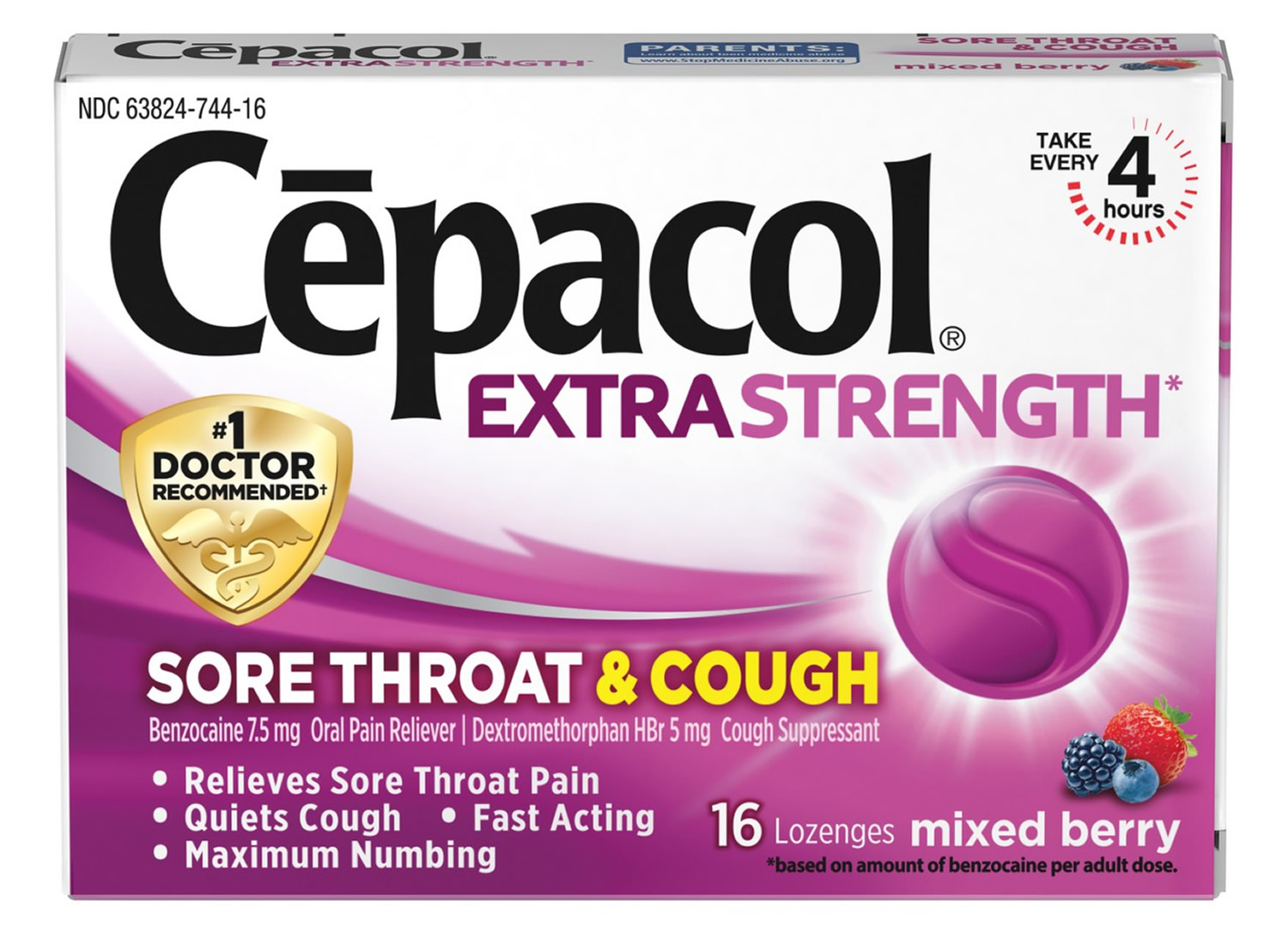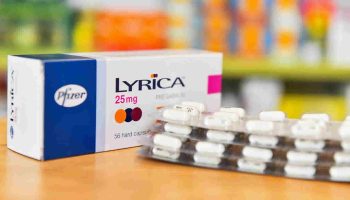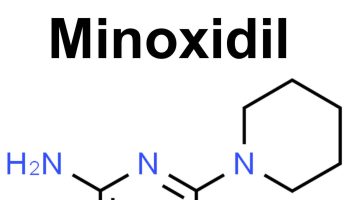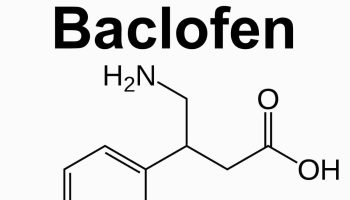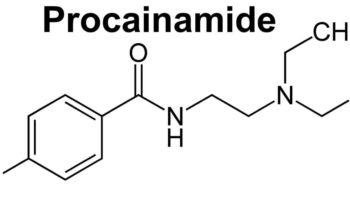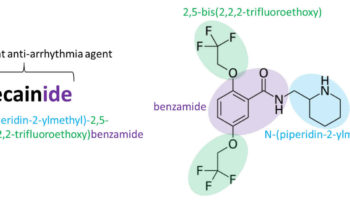What is Cepacol
Cepacol is a brand that has many different products. For example, there are Cepacol Sore Throat Lozenges and Cepacol Mouthwash.
Cepacol Sore Throat and Cough Mixed Berry Lozenges
Active Ingredients (in each lozenge): Benzocaine 7.5 mg [local anesthetic] + Dextromethorphan hydrobromide 5 mg [cough suppressant]
Inactive ingredients: FD&C blue no. 1, FD&C red no. 40, flavors, isomalt, maltitol, propylene glycol, purified water, sodium bicarbonate, sucralose
Uses: Temporarily relieves:
- cough due to minor throat and bronchial irritation as may occur with the common cold
- sore throat
- sore mouth
- minor mouth irritation
- pain associated with canker sores
Purpose: Oral pain reliever and cough suppressant
Cepacol Sore Throat and Cough Mixed Berry Lozenges Dosage
- Adults and Children 12 years or older: take 2 lozenges (one immediately after the other) and allow each lozenge to dissolve slowly in the mouth; may be repeated every 4 hours, not to exceed 12 lozenges in any 24-hour period, or as directed by a doctor
- Children under 6 years of age: DO NOT USE
Cepacol Extra Strength Sore Throat Cherry Lozenges
Active Ingredients (in each lozenge): Benzocaine 15 mg [local anesthetic] + Menthol 3.6 mg [cooling sensation]
Inactive ingredients: D&C red no. 33, FD&C red no. 40, flavors, isomalt, maltitol, purified water, sodium bicarbonate, sucralose
Uses: Temporary relief of occasional:
- sore throat
- sore mouth
- minor mouth irritation
- pain associated with canker sores
Purpose: Oral pain reliever
Cepacol Extra Strength Sore Throat Cherry Lozenges Dosage
- Adults and Children 5 years or older: allow lozenge to dissolve slowly in the mouth; may be repeated every 2 hours as needed or as directed by a doctor or dentist.
- Children under 5 years of age: DO NOT USE
Cepacol Extra Strength Sore Throat Tangerine Lozenges
Active Ingredients (in each lozenge): Benzocaine 15 mg [local anesthetic] + Menthol 2.3 mg [cooling sensation]
Inactive ingredients: FD&C yellow no. 6, flavors, isomalt, maltitol, propylene glycol, purified water, sodium bicarbonate, sucralose
Uses: Temporary relief of occasional:
- sore throat
- sore mouth
- minor mouth irritation
- pain associated with canker sores
Purpose: Oral pain reliever
Cepacol Extra Strength Sore Throat Tangerine Lozenges Dosage
- Adults and Children 5 years or older: allow lozenge to dissolve slowly in the mouth; may be repeated every 2 hours as needed or as directed by a doctor or dentist.
- Children under 5 years of age: DO NOT USE
Cepacol Extra Strength Sore Throat Honey Lemon Lozenges
Active Ingredients (in each lozenge): Benzocaine 15 mg [local anesthetic] + Menthol 2.5 mg [cooling sensation]
Inactive ingredients: D&C yellow no. 10, FD&C yellow no. 6, flavors, isomalt, maltitol, propylene glycol, purified water, sodium bicarbonate, sucralose
Uses: Temporary relief of occasional:
- sore throat
- sore mouth
- minor mouth irritation
- pain associated with canker sores
Purpose: Oral pain reliever
Cepacol Extra Strength Sore Throat Honey Lemon Lozenges Dosage
- Adults and Children 5 years or older: allow lozenge to dissolve slowly in the mouth; may be repeated every 2 hours as needed or as directed by a doctor or dentist.
- Children under 5 years of age: DO NOT USE
Cepacol Mouthwash
Active Ingredients: Cetylpyridinium chloride 0.05%
Inactive ingredients: purified water, alcohol 14% v/v, glycerin, sodium phosphate dibasic, eucalyptus oil, polysorbate 80, methyl salicylate, cinnamon oil, peppermint oil, saccharin sodium, sodium phosphate monobasic anhydrous, menthol, edetate disodium, FD&C Yellow #5
Uses: Helps prevent and reduce plaque that leads to:
- gingivitis, an early form of gum disease
- bleeding gums
Purpose: Antigingivitis/Antiplaque
Cepacol Mouthwash Warnings
Stop use and ask a dentist if:
- gingivitis, bleeding, or redness persists for more than 2 weeks
- you have painful or swollen gums, pus from the gum line, loose teeth, or increasing spacing between the teeth. These may be signs or symptoms of periodontitis, a serious form of gum disease.
Keep out of the reach of children under 6 years of age. If more than used for rinsing is accidentally swallowed, get medical help or contact a Poison Control Center right away.
Cepacol Mouthwash Directions of Use
- This rinse is not intended to replace brushing or flossing
- Adults and children 12 years of age and older: vigorously swish 20 milliliters of rinse between your teeth twice a day for 30 seconds and then spit out. Do not swallow the rinse
- Children 6 years to under 12 years of age: Supervise use
- Children under 6 years of age: DO NOT USE
What is Dextromethorphan?
Dextromethorphan is a cough suppressant. It affects the signals in the brain that trigger cough reflex.
Dextromethorphan is used to treat a cough.
Dextromethorphan will not treat a cough that is caused by smoking, asthma, or emphysema.
Dextromethorphan Important information
Do not give dextromethorphan to a child younger than 4 years old.
Always ask a doctor before giving a cough or cold medicine to a child. Death can occur from the misuse of cough and cold medicines in very young children.
Do not use dextromethorphan if you have used an monoamine oxidase inhibitor (MAOI) such as isocarboxazid (Marplan), phenelzine (Nardil), rasagiline (Azilect), selegiline (Eldepryl, Emsam), or tranylcypromine (Parnate) within the past 14 days. Serious, life-threatening side effects can occur if you take dextromethorphan before the monoamine oxidase inhibitor (MAOI) has cleared from your body.
Do not use any other over-the-counter cough, cold, or allergy medication without first asking your doctor or pharmacist. If you take certain products together you may accidentally take too much of one or more types of medicine. Read the label of any other medicine you are using to see if it contains dextromethorphan. Dextromethorphan will not treat a cough that is caused by smoking, asthma, or emphysema.
Before taking Dextromethorphan
Do not use dextromethorphan if you have used an monoamine oxidase inhibitor (MAOI) such as isocarboxazid (Marplan), phenelzine (Nardil), rasagiline (Azilect), selegiline (Eldepryl, Emsam), or tranylcypromine (Parnate) within the past 14 days. Serious, life-threatening side effects can occur if you take dextromethorphan before the MAO inhibitor has cleared from your body.
Ask a doctor or pharmacist about using dextromethorphan if you have emphysema or chronic bronchitis.
Dextromethorphan may be harmful to an unborn baby. Tell your doctor if you are pregnant or plan to become pregnant during treatment. Dextromethorphan may pass into breast milk and could harm a nursing baby. Do not use this medication without telling your doctor if you are breast-feeding a baby.
Artificially-sweetened liquid forms of cough medicine may contain phenylalanine. This would be important to know if you have phenylketonuria (PKU). Check the ingredients and warnings on the medication label if you are concerned about phenylalanine.
What should I avoid?
Avoid drinking alcohol. It can increase some of the side effects of dextromethorphan. This medication can cause side effects that may impair your thinking or reactions. Be careful if you drive or do anything that requires you to be awake and alert.
Avoid taking diet pills, caffeine pills, or other stimulants (such as ADHD medications) without your doctor’s advice. Taking a stimulant together with cough medicine can increase your risk of unpleasant side effects.
Do not use any other over-the-counter cough, cold, or allergy medication without first asking your doctor or pharmacist. Dextromethorphan is contained in many combination medicines available over the counter. If you take certain products together you may accidentally take too much of this medicine. Read the label of any other medicine you are using to see if it contains dextromethorphan.
What other drugs will affect dextromethorphan?
Before taking dextromethorphan, tell your doctor if you are using any of the following drugs:
- celecoxib (Celebrex);
- cinacalcet (Sensipar);
- darifenacin (Enablex);
- imatinib (Gleevec);
- quinidine (Quinaglute, Quinidex);
- ranolazine (Ranexa)
- ritonavir (Norvir);
- sibutramine (Meridia);
- terbinafine (Lamisil);
- medicines to treat high blood pressure; or
- antidepressant medications such as amitriptyline (Elavil, Etrafon), bupropion (Wellbutrin, Zyban), fluoxetine (Prozac, Sarafem), fluvoxamine (Luvox), imipramine (Janimine, Tofranil), paroxetine (Paxil), sertraline (Zoloft), and others.
This list is not complete and there may be other drugs that can interact with dextromethorphan. Tell your doctor about all the prescription and over-the-counter medications you use. This includes vitamins, minerals, herbal products, and drugs prescribed by other doctors. Do not start using a new medication without telling your doctor.
Dextromethorphan side effects
Along with its needed effects, dextromethorphan may cause some unwanted effects. Although not all of these side effects may occur, if they do occur they may need medical attention. Less serious side effects are more likely, such as stomach upset.
General side effects
- Adverse effects have included gastrointestinal disturbances such as stomach upset and diarrhea.
Nervous system
- Frequency not reported: Drowsiness, dizziness, convulsions
Respiratory
- Frequency not reported: Respiratory depression
Gastrointestinal
- Frequency not reported: Vomiting, nausea, diarrhea, abdominal pain, gastrointestinal disturbance
Hypersensitivity
- Rare (less than 0.1%): Fixed-drug eruptions
Psychiatric
- Cases of abuse have been reported.
- Frequency not reported: Mental confusion, excitation, insomnia, abuse
Dermatologic
- Frequency not reported: Rash, angioedema, pruritus, urticaria
Check with your doctor as soon as possible if any of the following side effects occur while taking dextromethorphan:
Symptoms of dextromethorphan overdose:
- blurred vision
- confusion
- difficulty in urination
- drowsiness or dizziness
- nausea or vomiting (severe)
- shakiness and unsteady walk
- slowed breathing
- unusual excitement, nervousness, restlessness, or irritability (severe)
Some side effects of dextromethorphan may occur that usually do not need medical attention. These side effects may go away during treatment as your body adjusts to the medicine. Also, your health care professional may be able to tell you about ways to prevent or reduce some of these side effects. Check with your health care professional if any of the following side effects continue or are bothersome or if you have any questions about them:
Less common or rare side effects:
- confusion
- constipation
- dizziness (mild)
- drowsiness (mild)
- headache
- nausea or vomiting
- stomach pain
Get emergency medical help if you have any of these signs of an allergic reaction:
- hives;
- difficulty breathing;
- swelling of your face, lips, tongue, or throat.
Stop using dextromethorphan and call your doctor at once if you have any of these serious side effects:
- severe dizziness, anxiety, restless feeling, or nervousness;
- confusion, hallucinations; or
- slow, shallow breathing.
What is Benzocaine?
Benzocaine is a local anesthetic (numbing medication) that acts by preventing transmission of impulses along nerve fibers and at nerve endings that is commonly used as a topical pain reliever. Cepacol Sore Throat Lozenges (Benzocaine) is an ester of paraaminobenzoic acid, with anesthetic activity. Benzocaine binds to the sodium channel and reversibly stabilizes the neuronal membrane which decreases its permeability to sodium ions. Depolarization of the neuronal membrane is inhibited, thereby blocking the initiation and conduction of nerve impulses along nerve fibers and at nerve endings. The action of benzocaine is completely reversible.
U.S. Food and Drug Administration (FDA) is warning parents and caregivers that benzocaine products should not be used to treat teething pain in infants or children 1
Safety Announcement
The U.S. Food and Drug Administration (FDA) is warning that over-the-counter (OTC) oral drug products containing benzocaine should not be used to treat infants and children younger than 2 years. The U.S. Food and Drug Administration (FDA) are also warning that benzocaine oral drug products should only be used in adults and children 2 years and older if they contain certain warnings on the drug label. These products carry serious risks and provide little to no benefits for treating oral pain, including sore gums in infants due to teething. Benzocaine, a local anesthetic, can cause a condition in which the amount of oxygen carried through the blood is greatly reduced. This condition, called methemoglobinemia, can be life-threatening and result in death.
Consumers using benzocaine products to treat mouth pain should seek medical attention immediately for signs and symptoms of methemoglobinemia.
Signs and symptoms of methemoglobinemia include:
- pale, gray or blue-colored skin, lips, and nail beds;
- shortness of breath;
- fatigue;
- confusion;
- headache;
- lightheadedness; and
- fast heart rate.
Signs and symptoms of methemoglobinemia may appear within minutes to one to two hours after using benzocaine. Symptoms may occur after using benzocaine for the first time, as well as after prior uses.
Benzocaine is a local anesthetic contained in some over-the-counter (OTC) products for the temporary relief of pain due to minor irritation, soreness, or injury of the mouth and throat. Benzocaine products are marketed as gels, sprays, ointments, solutions, and lozenges under brand names such as Anbesol, Orabase, Orajel, Baby Orajel, Hurricaine, and Topex, as well as store brands and generics. Prescription local anesthetics include articaine, bupivacaine, chloroprocaine, lidocaine, mepivacaine, prilocaine, ropivacaine, and tetracaine.
The U.S. Food and Drug Administration (FDA) have been closely monitoring the risk of methemoglobinemia with the use of over-the-counter (OTC) and prescription local anesthetics and previously communicated about this risk in 2014, 2011, and 2006. The U.S. Food and Drug Administration (FDA) estimate that more than 400 cases of benzocaine-associated methemoglobinemia have been reported to FDA or published in the medical literature since 1971. There are likely additional cases about which the FDA are unaware.
As part of our continued monitoring of this safety risk, the U.S. Food and Drug Administration (FDA) recently evaluated 119 cases of benzocaine-associated methemoglobinemia reported to FDA and identified in the medical literature in the 8½ years between February 2009 and October 2017. The U.S. Food and Drug Administration (FDA) have continued to receive cases even after their 2014 communication. Most of the 119 cases were serious and required treatment. Twenty-two cases occurred in patients younger than 18 years, and 11 of these were in children younger than 2 years. Four patients died among the 119 patients, including one infant. The U.S. Food and Drug Administration (FDA) also conducted a study comparing the relative ability of the two local anesthetics benzocaine and lidocaine to make methemoglobin. The study showed that benzocaine generated much more methemoglobin than lidocaine in a red blood cell model.
The U.S. Food and Drug Administration (FDA) urge patients, consumers, and health care professionals to report side effects involving benzocaine, prescription local anesthetics, or other medicines to the FDA MedWatch program. If you experience a serious side effect, you or your doctor may send a report to the Food and Drug Administration’s (FDA) MedWatch Adverse Event Reporting program online (https://www.fda.gov/Safety/MedWatch/default.htm) or by phone (1-800-332-1088).
Due to the significant safety risk of methemoglobinemia, the U.S. Food and Drug Administration (FDA) have urged manufacturers that they should stop marketing OTC oral drug products for treating teething in infants and children younger than 2 years. If companies do not comply, the FDA will take action to remove these products from the market. The U.S. Food and Drug Administration (FDA) have also urged manufacturers of OTC oral drug products containing benzocaine for adults and children 2 years and older to make the following changes to the labels of their products:
- Adding a warning about methemoglobinemia;
- Adding contraindications, FDA’s strongest warnings, directing parents and caregivers not to use the product for teething and not to use in infants and children younger than 2 years; and
- Revising the directions to direct parents and caregivers not to use the product in infants and children younger than 2 years.
The U.S. Food and Drug Administration (FDA) continue to monitor the safety and effectiveness of OTC benzocaine products and intend to take additional actions in the future as needed. The U.S. Food and Drug Administration (FDA) will notify the public about any updates. In addition to their recent actions regarding OTC benzocaine products, the FDA are also requiring a standardized methemoglobinemia warning to be included in the prescribing information of all prescription local anesthetics.
Parents and caregivers should follow the American Academy of Pediatrics’ recommendations for treating teething pain 2:
- Gently rub or massage the child’s gums with one of your fingers.
- Use a firm rubber teething ring.
- If these remedies don’t provide relief, contact your health care professional for advice on other treatments.
Topical pain relievers and medications that are rubbed on the gums are not useful because they wash out of a baby’s mouth within minutes. FDA has previously cautioned parents and caregivers to not give certain homeopathic teething tablets to children. FDA confirms elevated levels of belladonna in certain homeopathic teething products 3.
Alternative treatments for adults who experience mouth pain may include dilute salt water mouth rinse and OTC pain relief medications. Adults should follow the American Dental Association’s recommendations for mouth sores and spots 4:
- Schedule regular oral health checkups
- Keep a diary of what you eat and drink
- Keep a list of oral hygiene products you have been using
- Avoid all tobacco products
- If you drink alcoholic beverages, do so in moderation
- See your dentist if you notice any change in your mouth
Health care professionals should warn patients of the possibility of methemoglobinemia and advise them of the signs and symptoms when recommending or prescribing local anesthetic products.
Some patients are at greater risk for complications related to methemoglobinemia. This includes those with breathing problems such as asthma, bronchitis, or emphysema; heart disease, and the elderly. Health care professionals using local anesthetics during medical procedures should take steps to minimize the risk for methemoglobinemia. These include monitoring patients for signs and symptoms suggestive of methemoglobinemia; using co-oximetry when possible; and having resuscitation equipment and medications readily available, including methylene blue.
What is Methemoglobinemia?
Methemoglobinemia (MetHb) is a blood disorder in which an abnormal amount of methemoglobin is produced 5. Hemoglobin is the protein in red blood cells (RBCs) that carries and distributes oxygen to the body. Methemoglobin is a form of hemoglobin. With methemoglobinemia, the hemoglobin can carry oxygen, but is not able to release it effectively to body tissues.
Danger signs and symptoms of methemoglobinemia include:
- pale, gray, or blue-colored skin, lips and nail beds
- shortness of breath
- fatigue
- confusion
- headache
- light-headedness
- rapid heart rate
Symptoms can occur within minutes to hours after benzocaine use. They can occur after using the drug for the first time, as well as after several uses.
If your child has any of these symptoms after using benzocaine, stop using the product and seek medical help immediately by calling your local emergency services number for an ambulance.
Methemoglobinemia caused by benzocaine may require treatment with medications and admission to a hospital. Serious cases should be treated right away. If left untreated or if treatment is delayed, methemoglobinemia may cause permanent injury to the brain and body tissues, and even death, from the insufficient amount of oxygen in the blood.
Complications of methemoglobinemia include 6:
- Shock
- Seizures
- Death
Methemoglobinemia Exams and Tests 6
A baby with this condition will have a bluish skin color (cyanosis). The health care provider will perform blood tests to diagnose the condition. Tests may include:
- Checking the oxygen level in the blood (pulse oximetry)
- Blood test to check levels of gases in the blood (arterial blood gas analysis)
Methemoglobinemia Treatment 6
A medicine called methylene blue is used to treat severe methemoglobinemia. Methylene blue may be unsafe in people who have or may be at risk for a blood disease called glucose-6-phosphate dehydrogenase (G6PD). They should not take this medicine. If you or your child has glucose-6-phosphate dehydrogenase (G6PD), always tell your provider before getting treatment.
Ascorbic acid may also be used to reduce the level of methemoglobin.
Alternative treatments include hyperbaric oxygen therapy, red blood cell transfusion and exchange transfusions.
In most cases of mild acquired methemoglobinemia, no treatment is needed. But you should avoid the medicine or chemical that caused the problem. Severe cases may need a blood transfusion.
Outlook (Prognosis)
People with acquired methemoglobinemia often do very well once the drug, food, or chemical that caused the problem is identified and avoided 6.
Important Information Before Using Cepacol Sore Throat Lozenges
Cepacol Sore Throat Lozenges (Benzocaine) used in the mouth or throat may cause methemoglobinemia, a life-threatening condition in which the amount of oxygen in your blood stream becomes dangerously low. Do not use this medicine if you have ever had methemoglobinemia.
GET EMERGENCY MEDICAL HELP IF YOU HAVE SYMPTOMS OF METHEMOGLOBINEMIA: headache, tired feeling, confusion, fast heart rate, and feeling light-headed or short of breath, with a pale, blue, or gray appearance of your skin, lips, or fingernails.
- Do not use this medicine on a child younger than 2 years old without medical advice.
An overdose of numbing medications can cause fatal side effects if too much of the medicine is absorbed through your skin and into your blood. Use the smallest amount of this medication needed.
Ask a doctor or pharmacist if it is safe for you to use Cepacol Sore Throat Lozenges (Benzocaine) if you have:
- asthma, bronchitis, emphysema, or other breathing disorder;
- heart disease;
- a personal or family history of methemoglobinemia, or any genetic (inherited) enzyme deficiency; or
- if you smoke.
It is not known whether Cepacol Sore Throat Lozenges (Benzocaine) topical will harm an unborn baby. Ask a doctor before using this medicine if you are pregnant.
It is not known whether Cepacol Sore Throat Lozenges (Benzocaine) topical passes into breast milk or if it could affect a nursing baby. Ask a doctor before using this medicine if you are breast-feeding.
Benzocaine Precautions
- Benzocaine topical is considered contraindicated in patients with congenital or idiopathic methemoglobinemia.
- Benzocaine should not be used in infants less than 12 months of age who are receiving treatment with methemoglobin- inducing agents.
- Benzocaine topical is for external use only, and is not intended to be used in or near the eyes.
- Benzocaine crystals may appear as a white precipitate following topical application.
- Do not apply in large quantities or over large, raw, or blistered areas,
- Benzocaine topical is not intended for use on deep or puncture wounds, or serious burns.
- Instruct patients to avoid eating for approximately 1 hour following topical application to oral mucosa.
- Safety and effectiveness of benzocaine sore throat lozenges have not been established in children less than 5 years of age.
Cepacol side effects
Cepacol Sore Throat Lozenges (Benzocaine) used in the mouth or throat may cause a rare but life-threatening condition called methemoglobinemia. In this condition, the amount of oxygen in your blood stream becomes dangerously low. This condition may occur after only one use of benzocaine or after several uses.
Signs and symptoms may occur within minutes or up to 2 hours after using Cepacol Sore Throat Lozenges (Benzocaine) in the mouth or throat.
GET EMERGENCY MEDICAL HELP IF YOU HAVE:
- headache, tired feeling, confusion;
- fast heart rate;
- feeling light-headed or short of breath; and
- pale, blue, or gray appearance of your skin, lips, or fingernails.
Get emergency medical help if you have signs of an allergic reaction: hives; difficult breathing; swelling of your face, lips, tongue, or throat.
Stop using Cepacol Sore Throat Lozenges (Benzocaine) and call your doctor at once if you have:
- severe burning, stinging, or sensitivity where the medicine is applied;
- swelling, warmth, or redness; or
- oozing, blistering, or any signs of infection.
Common side effects may include:
- mild stinging, burning, or itching where the medicine is applied;
- skin tenderness or redness; or
- dry white flakes where the medicine was applied.
This is not a complete list of side effects and others may occur. Call your doctor for medical advice about side effects. If you experience a serious side effect, you or your doctor may send a report to the Food and Drug Administration’s (FDA) MedWatch Adverse Event Reporting program online (https://www.fda.gov/Safety/MedWatch/default.htm) or by phone (1-800-332-1088).
Along with its needed effects, benzocaine topical (the active ingredient contained in Cepacol Sore Throat Lozenges) may cause some unwanted effects. Although not all of these side effects may occur, if they do occur they may need medical attention.
Check with your doctor immediately if any of the following side effects occur while taking benzocaine topical:
Incidence not known
- Headache
- High fever
- Nausea
- Vomiting
- Worsening of pain, redness, swelling, or irritation in or around the mouth
Side effects apply to benzocaine topical: compounding powder, mucous membrane gel, mucous membrane liquid, mucous membrane lozenge, mucous membrane paste, mucous membrane powder for reconstitution, mucous membrane spray, mucous membrane swab, mucous membrane tablet disintegrating, rectal ointment, rectal suppository, topical cream, topical gel, topical liquid, topical lotion, topical ointment, topical spray, topical stick, topical swab
Dermatologic
- Dermatologic side effects have included contact dermatitis and urticaria.
Local
- Local side effects have included burning and stinging.
Other
- Other side effects have included edema.
Cardiovascular
- Cardiovascular side effects have included angioedema.
Hematologic
- Hematologic side effects have included methemoglobinemia. FDA continues to receive reports of methemoglobinemia from postmarketing reporting.
- Risk of serious and potentially fatal blood disorder prompts FDA action on oral over-the-counter benzocaine products used for teething and mouth pain and prescription local anesthetics. https://www.fda.gov/Drugs/DrugSafety/ucm608265.htm[↩]
- Teething: 4 to 7 Months. https://www.healthychildren.org/English/ages-stages/baby/teething-tooth-care/pages/Teething-4-to-7-Months.aspx[↩]
- FDA confirms elevated levels of belladonna in certain homeopathic teething products. https://www.fda.gov/NewsEvents/Newsroom/PressAnnouncements/ucm538684.htm[↩]
- https://www.ada.org/~/media/ADA/Publications/Files/ADA_PatientSmart_Mouth_Sores.pdf?la=en[↩]
- Hartman NR, Mao JJ, Zhou H, Boyne MT, Wasserman AM, Taylor K, Racoosin JA, Patel V, Colatsky T. More methemoglobin is produced by benzocaine treatment than lidocaine treatment in human in vitro systems. Regul Toxicol Pharmacol 2014; 70:182-8.[↩]
- Methemoglobinemia. https://medlineplus.gov/ency/article/000562.htm[↩][↩][↩][↩]
